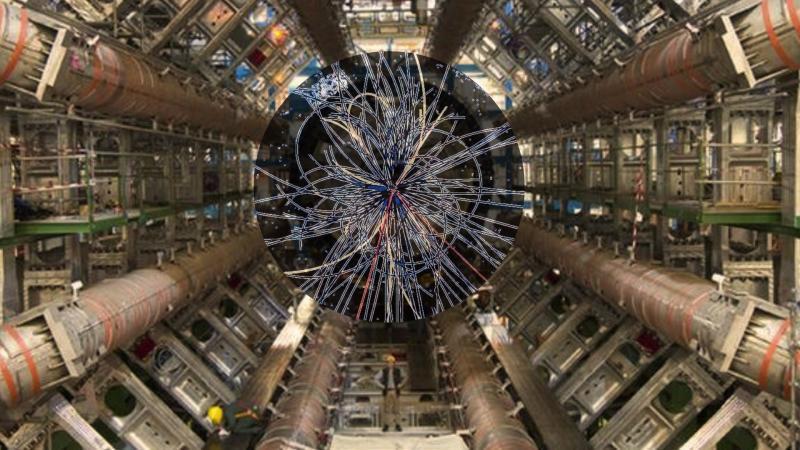
CERN Scientists Shedding Light on Antimatter & Universe’s Origins
The mysteries of antimatter have long fascinated scientists and the general public alike. For decades, researchers have been working to understand the fundamental forces of nature that govern the behavior of these elusive particles. Recently, a groundbreaking discovery at CERN’s Large Hadron Collider (LHC) has shed new light on the origins of the universe and the balance between matter and antimatter.
The ALICE collaboration, a team of scientists from around the world, has confirmed the first evidence of antihyperhelium-4 (4̄He) in heavy-ion collisions at the LHC. This exotic particle is a rare and fleeting glimpse into the fundamental forces that governed the universe in its earliest moments.
What is Antimatter?
Antimatter is a type of matter that has the same mass as regular matter, but opposite charges. When antimatter comes into contact with regular matter, it annihilates, releasing a vast amount of energy in the process. This process is known as pair production, where a particle and its antiparticle are created from a high-energy photon.
Antimatter is extremely rare in the universe, making up only about 1 in 10^18 particles of regular matter. Despite its scarcity, antimatter has played a crucial role in the development of modern physics, from the discovery of quantum mechanics to the development of particle accelerators like the LHC.
The Discovery of Antihyperhelium-4
The ALICE collaboration’s discovery of antihyperhelium-4 is a significant breakthrough in the study of antimatter. Hyperhelium-4, or 4He, is a type of helium nucleus that contains two protons and two neutrons. Antihyperhelium-4, or 4̄He, is its antimatter counterpart, containing two antiprotons and two antineutrons.
The ALICE collaboration detected the antihyperhelium-4 particles in heavy-ion collisions at the LHC, where two beams of heavy ions are collided at nearly the speed of light. This creates a hot and dense plasma of particles, which can be used to study the fundamental forces of nature.
The detection of antihyperhelium-4 was made possible by the ALICE collaboration’s advanced particle detectors, which are capable of identifying and measuring the properties of particles with unprecedented precision. The team used a combination of techniques, including particle identification and momentum measurement, to confirm the presence of the antihyperhelium-4 particles.
Implications for our Understanding of the Universe
The discovery of antihyperhelium-4 has significant implications for our understanding of the universe. One of the most important consequences is the insight it provides into the fundamental forces of nature that governed the universe in its earliest moments.
The universe began as a hot and dense plasma, with matter and antimatter particles present in equal amounts. However, for reasons that are still not fully understood, the universe came to be dominated by matter, with antimatter largely disappearing. The discovery of antihyperhelium-4 offers a glimpse into this early universe, providing scientists with new insights into the forces that governed the balance between matter and antimatter.
Enhancing our Understanding of Matter-Antimatter Balance
The ALICE collaboration’s discovery also enhances our understanding of the matter-antimatter balance in the universe. The presence of antihyperhelium-4 suggests that antimatter was present in the early universe, but was eventually dominated by matter.
This knowledge can be used to inform our understanding of the fundamental forces that governed the universe’s early moments. By studying the properties of antimatter particles like antihyperhelium-4, scientists can gain a better understanding of the forces that governed the balance between matter and antimatter.
Conclusion
The discovery of antihyperhelium-4 by the ALICE collaboration is a significant breakthrough in the study of antimatter. This exotic particle offers a glimpse into the fundamental forces of nature that governed the universe in its earliest moments, providing scientists with new insights into the balance between matter and antimatter.
As scientists continue to study the properties of antimatter particles, they are shedding light on the origins of the universe and the fundamental forces that govern its behavior. The discovery of antihyperhelium-4 is a testament to the power of human curiosity and the importance of basic scientific research.
Source: https://researchmatters.in/news/exotic-antimatter-spotted-heavy-ion-collisions-lhc






